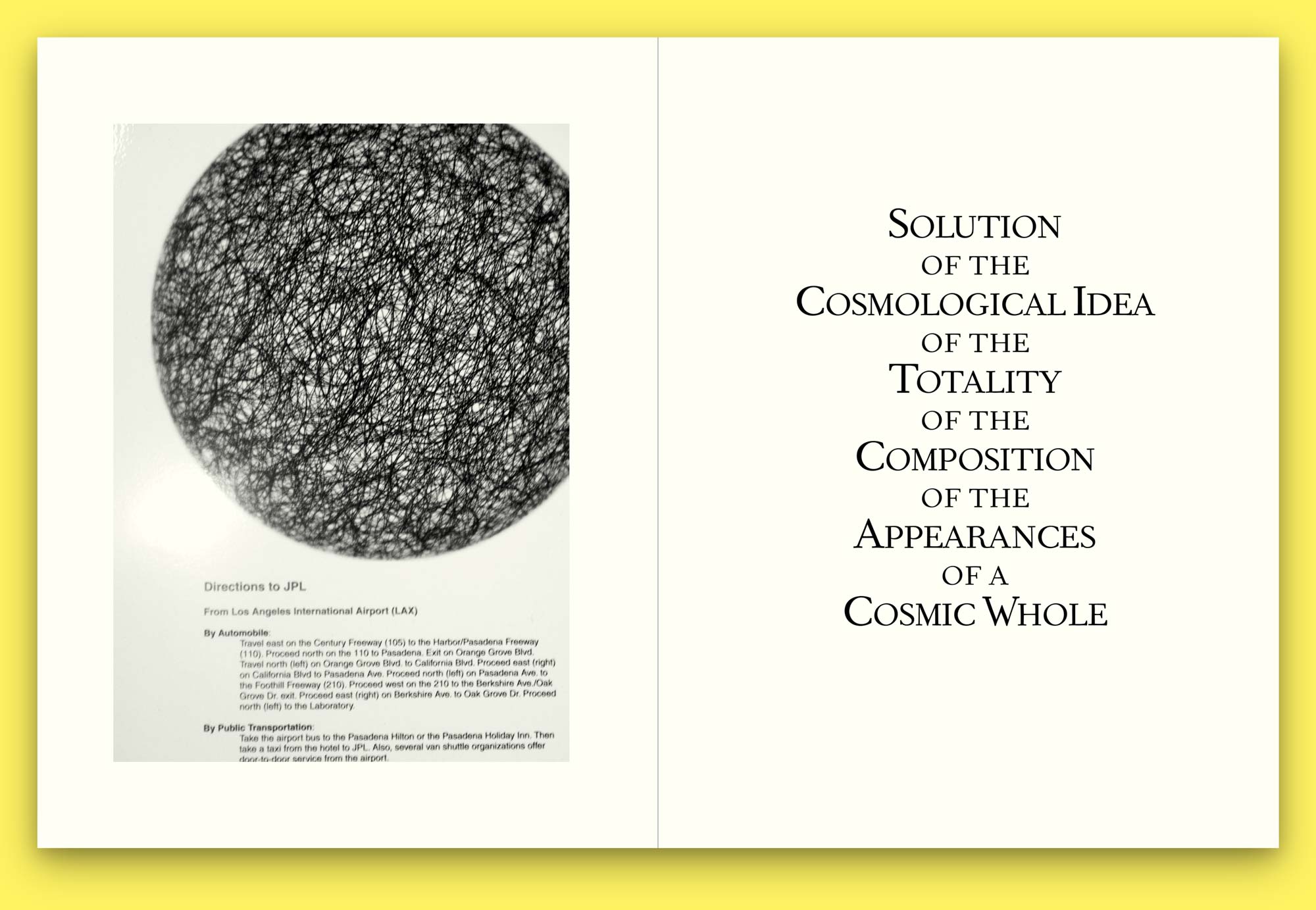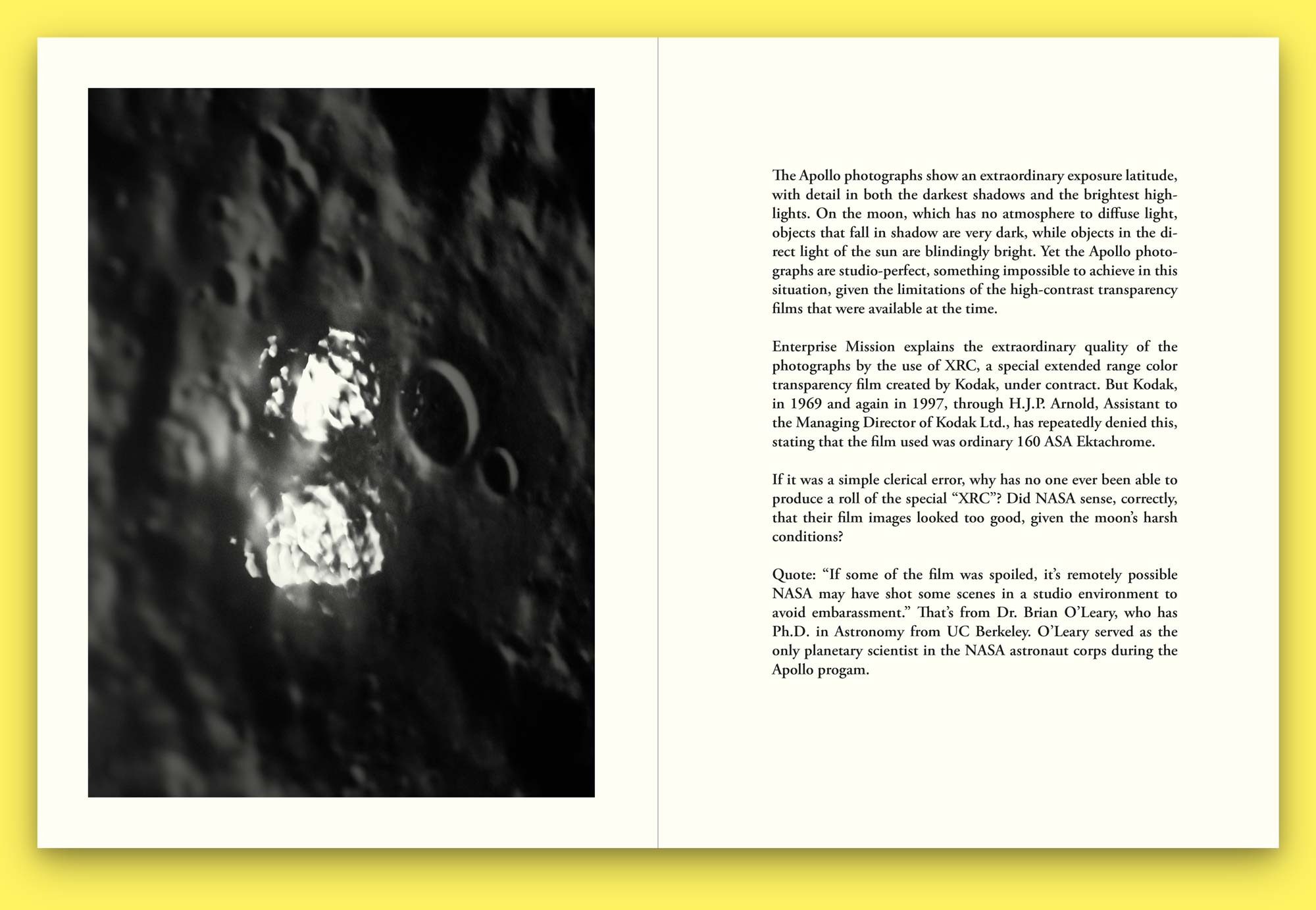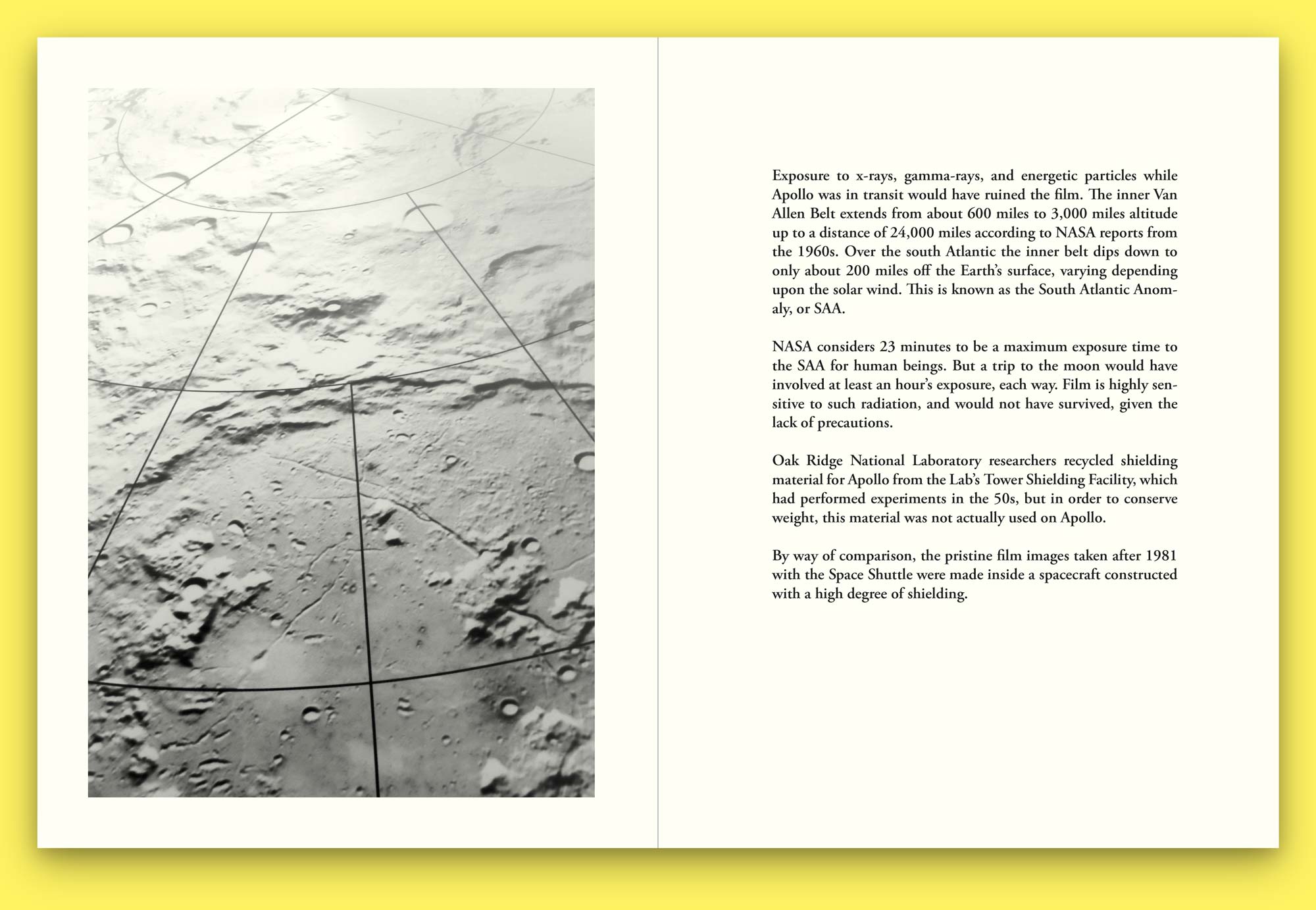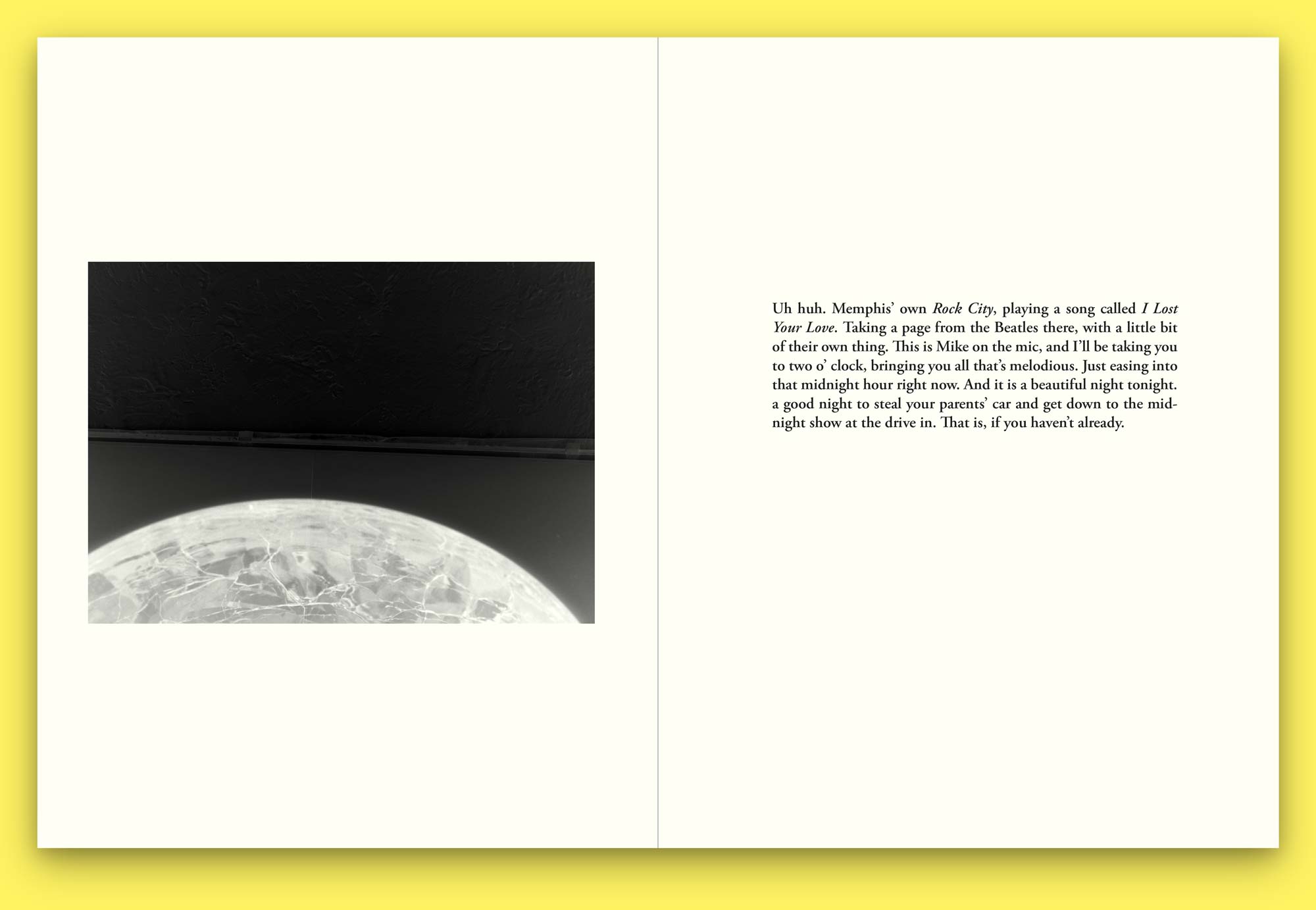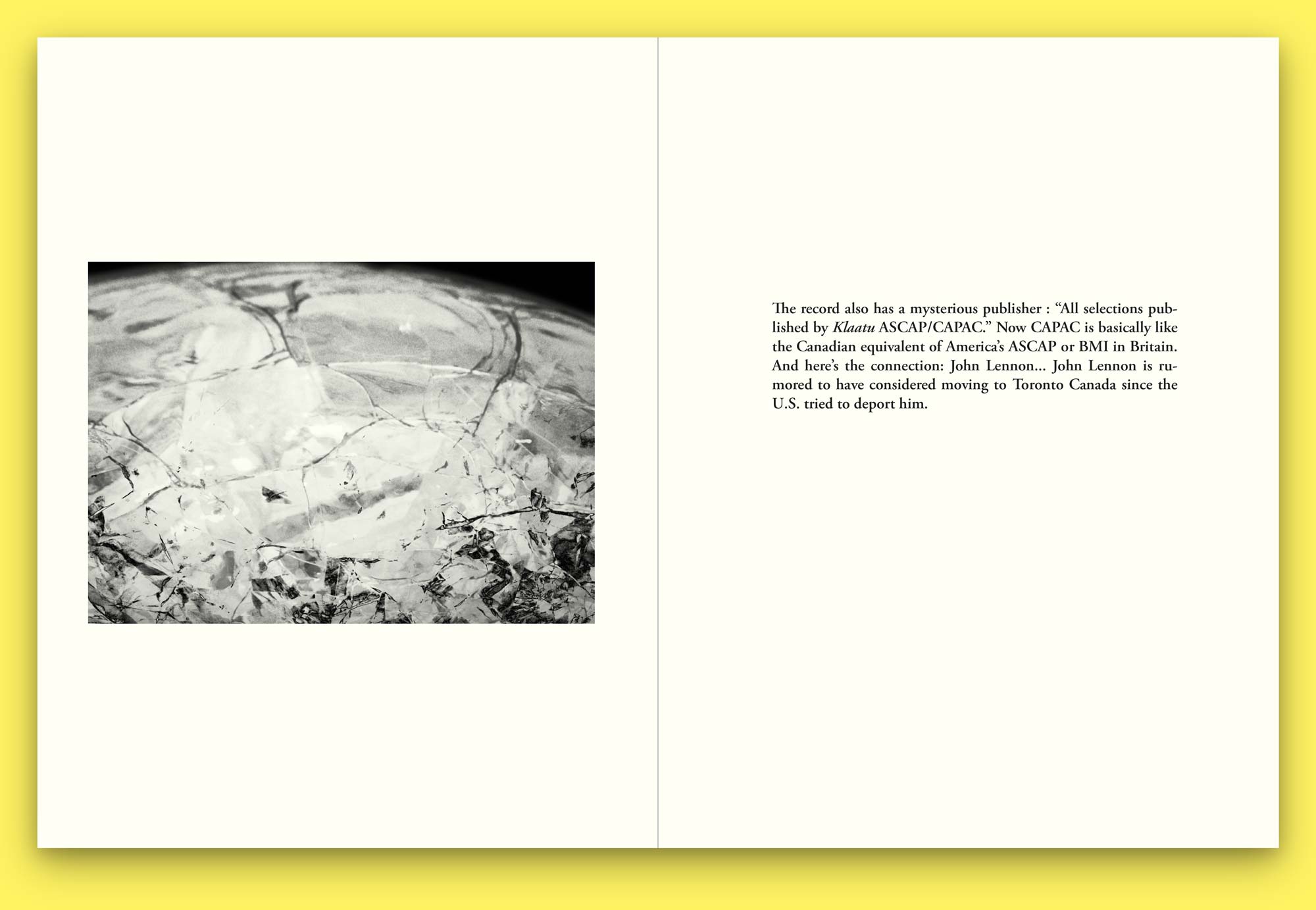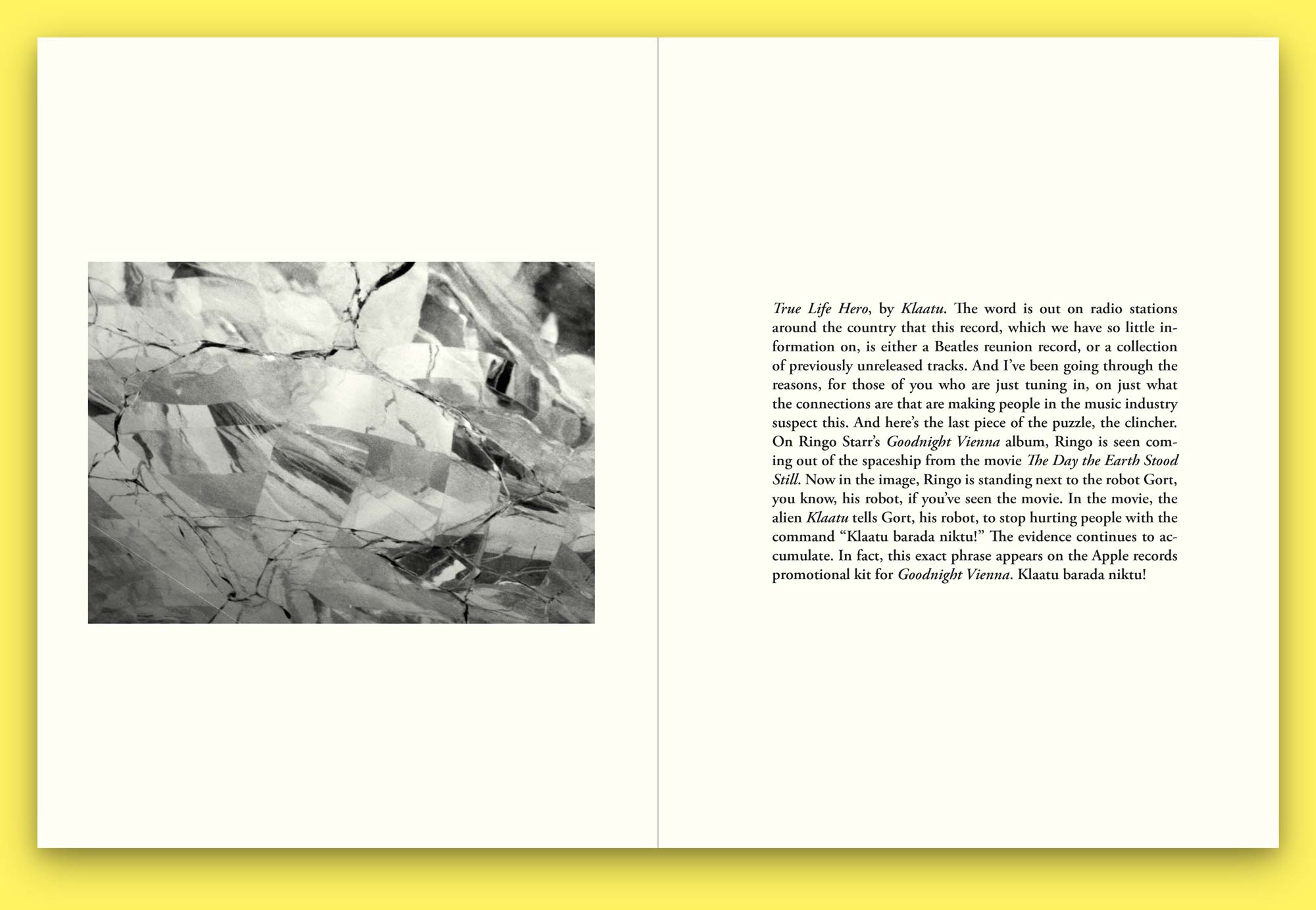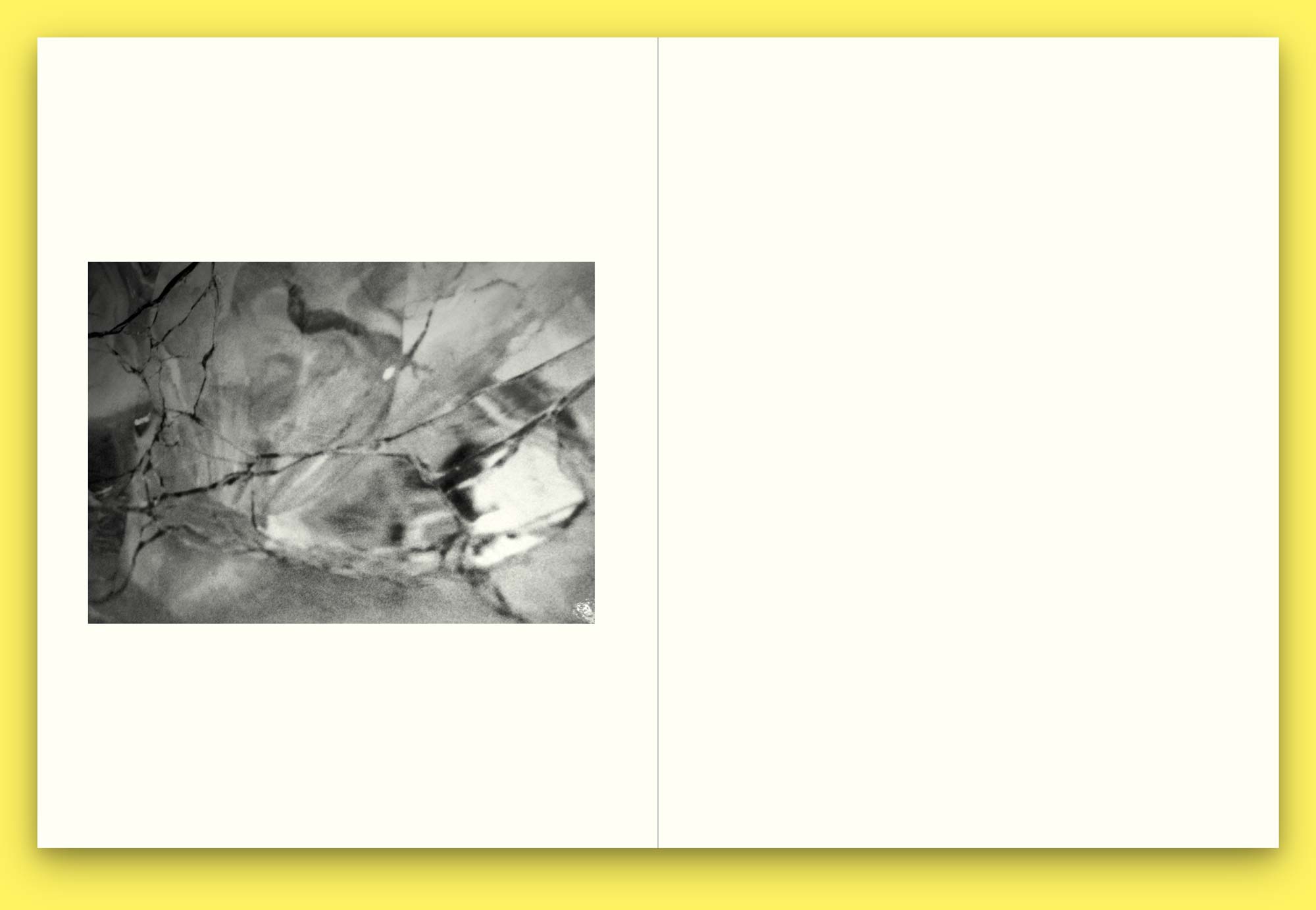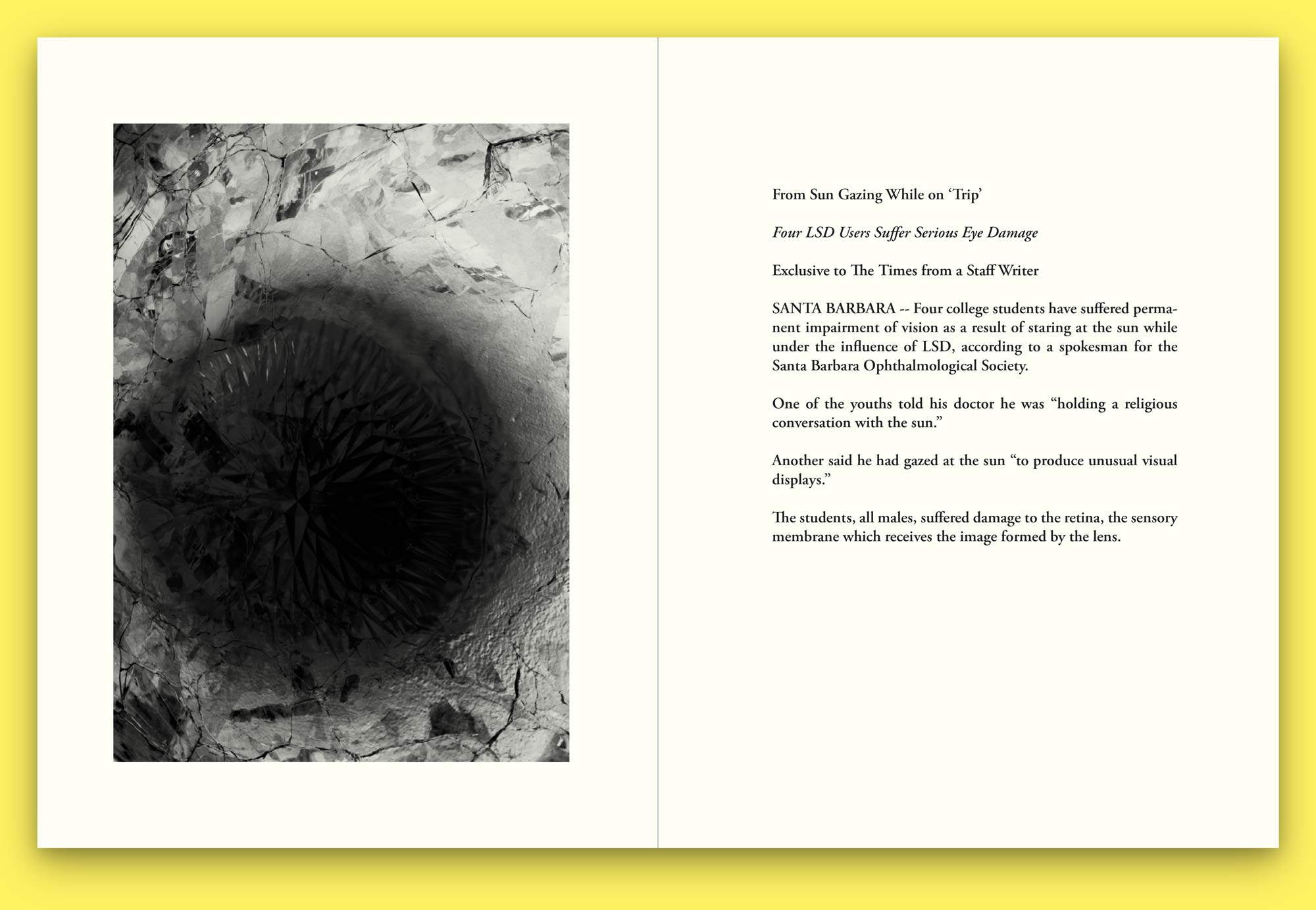
Solution of the Cosmological Idea of the Totality of the Composition of the Appearances of a Cosmic Whole is an artist's book about the relationship between fiction and reality.
Set in the year 1969, each of the book's three numbered sections adopts a distinct rhetorical model: public speaking, radio, or newspaper journalism. Each of the three texts embodies, through manipulation, a distinct, skeptical approach to government, the media, and photography.
The first section of the book is written in the voice of an conspiracy theorist, who questions the veracity of the documentation of the moon landing, and rehearses some of the commonplace objections to the documentation of the Apollo missions.
The second section is written in the voice of a radio DJ, who explores the theory that an album by the rock band Klaatu is really by the Beatles. Klaatu was a Canadian band who published an record album without any credits or text, in an effort to focus their listener's attention exclusively on their music. However, their suppression of the usual markers of authorship had the opposite effect, spawning a cottage industry of speculation as to the identity of the band.
The third section consists of unedited reprints of two Associated Press articles about students who supposedly went blind from staring at the sun while on LSD. These stories were widely published and shared at the time. But when a journalist went to do a follow up story on the supposedly blind former students, the original sources recanted, and admitted to making up the tale in order to scare kids off of acid. However, no public retraction of the original stories was ever published, and the anecdote continues to circulate in drug culture to this day.
Each spread of the book is illustrated with a black and white photograph, each created by rephotographing details of two of my large photographic prints. This project was realized during a residency at the Château de La Napoule in Mandelieu, France, in 2004.
From one point of view, the essential quality of fiction is that it describes imaginary events. From another point of view, however, the notion of fiction might be seen to lie in the pleasurability of the text, regardless of its truth value. My experience is that readers are often content to read a story that they know to be a mix of observation and invention, without precisely determining the boundary between the two. Photographs, however, don't seem to enjoy this same latitude of reception. People seem to very much want to know which parts of a retouched or computationally-generated photograph are "real." How does the crossing of this boundary inform the pleasurability of the image?
I made this book before the tsunami of online disinformation that began to gather in the late 00s, the implications of which we are still navigating. Once-marginal conspiracy theories have since become mainstream dogma. Looking at the book now, it seems both prescient and quaint.
First printed in 2004. Reprinted in 2010 with a handbound double-fan glue perfect binding. 6 1/4 x 8". Laser-printed interior pages with screenprinted iridescent silver cover. Open edition.
